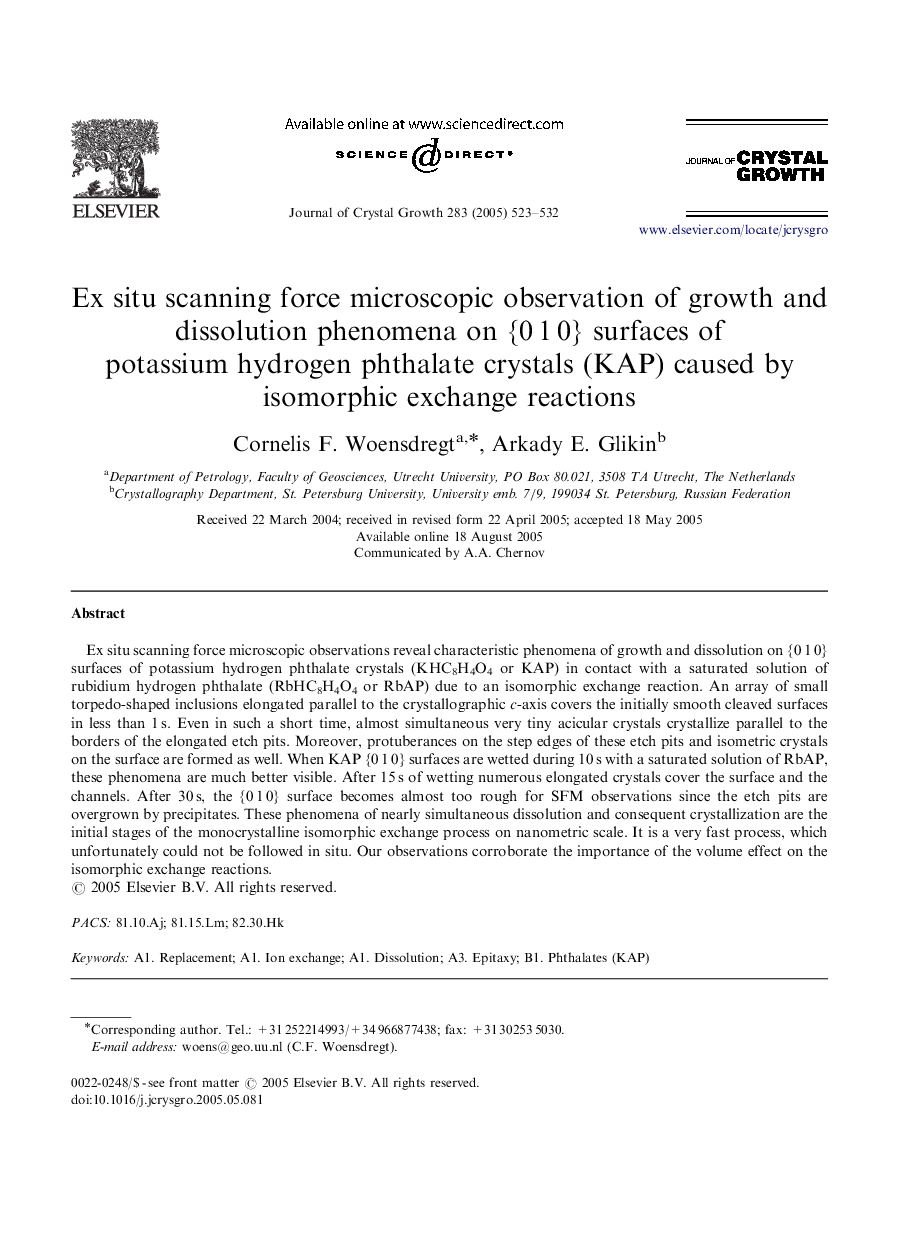| Article ID | Journal | Published Year | Pages | File Type |
|---|---|---|---|---|
| 9829419 | Journal of Crystal Growth | 2005 | 10 Pages |
Abstract
Ex situ scanning force microscopic observations reveal characteristic phenomena of growth and dissolution on {0Â 1Â 0} surfaces of potassium hydrogen phthalate crystals (KHC8H4O4 or KAP) in contact with a saturated solution of rubidium hydrogen phthalate (RbHC8H4O4 or RbAP) due to an isomorphic exchange reaction. An array of small torpedo-shaped inclusions elongated parallel to the crystallographic c-axis covers the initially smooth cleaved surfaces in less than 1Â s. Even in such a short time, almost simultaneous very tiny acicular crystals crystallize parallel to the borders of the elongated etch pits. Moreover, protuberances on the step edges of these etch pits and isometric crystals on the surface are formed as well. When KAP {0Â 1Â 0} surfaces are wetted during 10Â s with a saturated solution of RbAP, these phenomena are much better visible. After 15Â s of wetting numerous elongated crystals cover the surface and the channels. After 30Â s, the {0Â 1Â 0} surface becomes almost too rough for SFM observations since the etch pits are overgrown by precipitates. These phenomena of nearly simultaneous dissolution and consequent crystallization are the initial stages of the monocrystalline isomorphic exchange process on nanometric scale. It is a very fast process, which unfortunately could not be followed in situ. Our observations corroborate the importance of the volume effect on the isomorphic exchange reactions.
Related Topics
Physical Sciences and Engineering
Physics and Astronomy
Condensed Matter Physics
Authors
Cornelis F. Woensdregt, Arkady E. Glikin,
